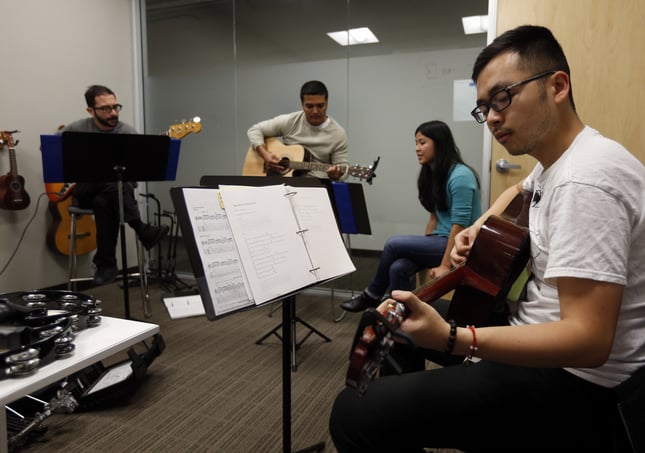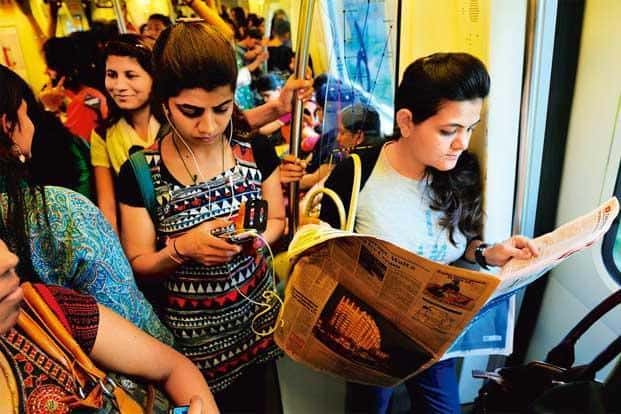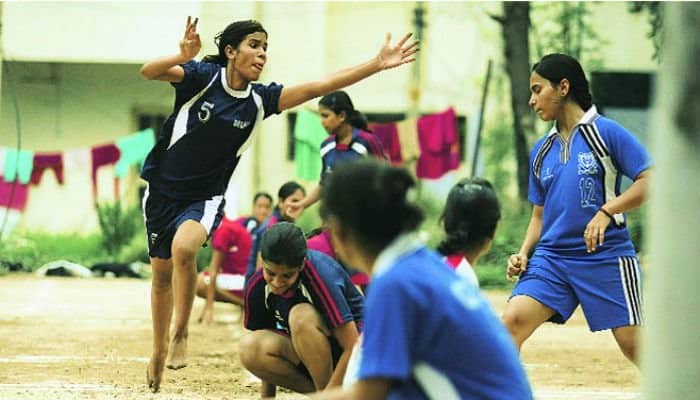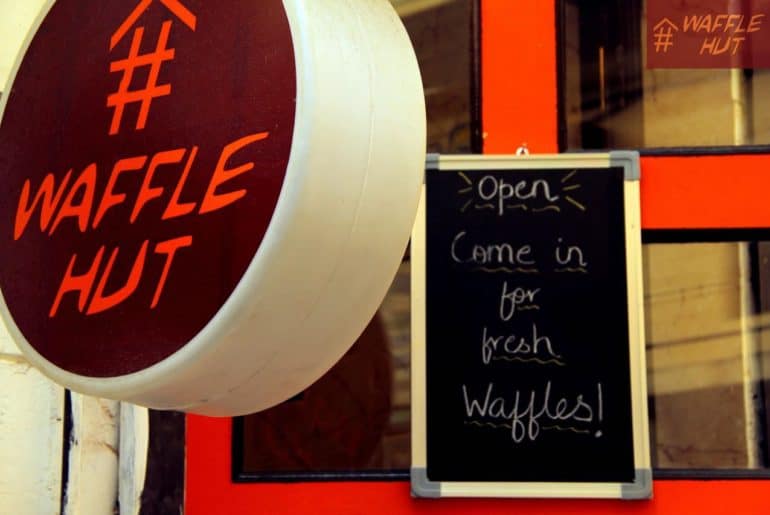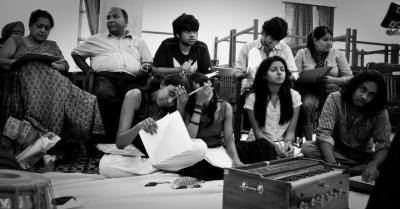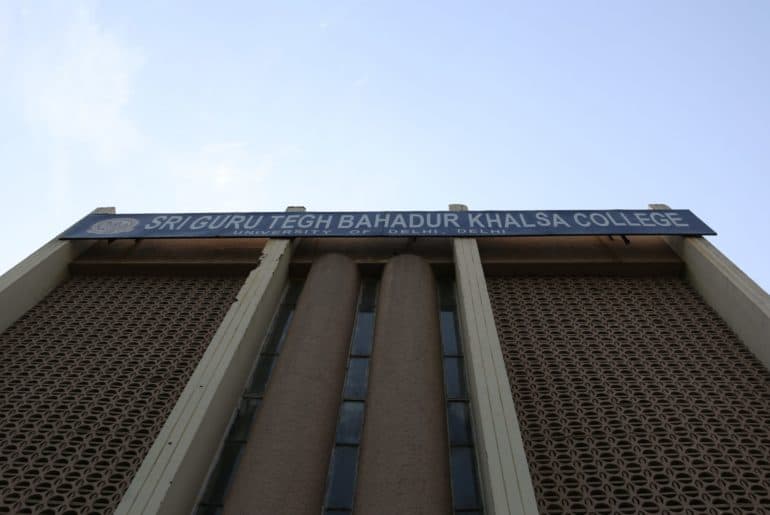We seldom realise the severity of an ugly situation until we find ourselves embroiled in something equally, if not more unpleasant. Reading the newspaper daily had kept me cognizant of the crimes against women in the National Capital; but only recently, when I was victimised, not once but thrice, did the shock and horror of it engulf me in hatred and disgust. The most outrageous part of it all is that my untoward experiences occurred on campus: an area that is supposed to be ‘a safe haven’ for the University’s burgeoning student population.
Episode 1: One day, as I waited for the train at the platform of Vishwavidyalaya station, I was approached by a stranger. He was a man in his mid-twenties. He boldly walked up to me and very squarely asked me, “Are you the prettiest girl on this planet?” Completely appalled by this stranger’s forwardness, my mind grew blank with fear. I was paralysed- both tongue and feet. He took my silent panic as encouragement and tried to get comfortable. Just then the metro rushed into the station. I reflexively jumped right in and fled to the Ladies’ coach. I found a corner seat and sat there, numb and motionless for the rest of the journey.
Episode 2: I was crossing the road in front of my college, when a bike with two crudely dressed boys sped past me. An instant later, the boy sitting behind the driver turned around, sized me up, whistled and hooted and loudly screamed out ‘Jaaneman, haseena!’ He followed this up with a cackle and before my mind could respond to the situation, the bike was a blur in the distance.
Episode 3: I was at Kamla Nagar, purchasing my books for the new academic session, when a group of boys, perceptibly students from a campus college, walked into the book store. One of them noticed me and overtly pointed me out to his friend. The friend then went on to call the boy beside him and before I knew it, all three boys were ogling at me. The stares made me extremely uncomfortable and I walked out immediately. I thought I had managed to escape the scene when these boys followed me out, overtook me, brushed their shoulder against me, called me ‘Tota’ and then hurried away.
Yes. The metro incident was my first experience with the disgusting indecency of men in Delhi University (and elsewhere, in general) and the other two episodes gave me a bitter taste of eve-teasing. I don’t wish to further opine my views on the subject of women’s safety in DU, because I know no one is listening. However, putting the entire issue in perspective, I, as a girl student in DU, seek answers to the following questions: what is the point of having a police constable stationed every 200 m on campus when lewd men still openly get away with their lascivious deeds? Also, why hasn’t the University done something more tangible to make public places like roads, platforms and campus markets safer? Why do problems like eve-teasing receive such tepid attention and response from the authorities? Are these issues not crimes? Or do we need something grave like rape or murder to happen to get authorities to implement stringent rules?
I know I am just one among the many women on campus who has had a tryst with such disturbing events. I feel we must come to the fore and talk about our experiences, no matter how hurtful, to create awareness and awaken the concerned parties to our cause. Questions like the ones above have to be raised more frequently and vociferously to actually pave the way for change.
So, dear sister, share your thoughts, views and opinions with us. Help us stir and sensitise the otherwise apathetic authorities. We look forward to hearing from you.
Image Credits: www.livemint.com
Kriti Sharma
[email protected]
Delhi University always boasts of a liberal exterior. However, little do we know about the many practices and special customs that some DU Colleges follow. Are you aware of these practices already? Find out!
The social fabric in DU:
Tradition is something that runs deep in our societal practices, right from the celebration of important calendar dates to following a set of rituals and Delhi University is no different an institution when it comes to following these practices.
Sri Guru Gobind Singh College of Commerce, a renowned Sikh minority college, has formalised strict rules and regulations, mainly revolving around the kind of clothes its students can wear. While sleeveless outfits, crop tops and short skirts are prohibited for girls, boys are not allowed to wear shorts.
Misbah, the Western Dance Society of SGGSCC, faces major problems when it comes to getting ECA attendance or wearing short costumes and practicing in the open within the college premises, as informed to us by many students on condition of anonymity. Insiders tell us that, initially there was no budget for societies except the societies of Folk nature like Bhangra and Gidda.
While there is a separate room allotted for western dance practices, outside the room, the dancers can’t wear short costumes. Though the rules have become a bit more liberal of late, but the college’s administration committee is stricter than that of other Sikh minority colleges like SGTB Khalsa.
The Swachh Bharat Abhiyaan in colleges:
It is not just our Prime Minister who takes the call for a clean India seriously. Some colleges have gone a step further in promoting this campaign. Kamala Nehru College does not permit its students to eat anywhere in the college except the canteen area. The whole college is adorned with notices that read ‘Don’t eat in the lawn’, ‘No eatables allowed in the class’, while the college has failed to alternatively create sitting spaces for its students and faculty. The lack of chairs, benches and other places to sit is inadequate to meet the current number of students.
While colleges have their own set of rules, it is important to understand the story from the other side as well!
Written on condition of anonymity (With inputs from verifiable sources) . Have similar stories to share? Write to us at [email protected] or [email protected].
Image credits: sggscc.ac.in and DU Beat
In an admission season of many firsts for Delhi University (DU), a centralised system of sports trials was followed, with different trials being held in the various colleges. However, the preceding fitness trials were no longer centralised but, also held in various colleges with applicants being allowed to appear in any college and use the same certificate everywhere.
An astounding 10,238 applications poured in this year for the 5% seats that the university allots for sports and ECA category. Currently, applicants from 43 disciplines are welcome, including, those from exotic sports like kayaking and canoeing.
Controversy had ensued prior to the sports trials with the High Court demanding DU to explain its sports admission process, after a petition was filed by NGO Child Health Organisation, calling for a centralised and transparent recruitment system. Moreover, 50 aspirants were barred from fitness tests on the very first day of trial as their certificates were deemed ineligible, with many of them blaming the University for not informing them earlier. However, according to grievance committee member, Dr Tarun Routhan, “Many applicants hadn’t checked the status of their admission on the varsity website. Almost 300 doubts and issues were addressed by the grievance committee within the 3 day allotted grievance period. Since the fitness tests were already underway, the issues of the barred candidates couldn’t be solved.”
Indoor sports persons had to clear one fitness test as opposed to two for outdoor players. At being asked about the fairness of this system, Dr Amita Rana, Head of Sports and Physical Education Department at Miranda House, maintained, “A basic level of fitness is expected of every applicant regardless of the sport. Even a player of chess needs enough stamina to perform for prolonged periods.”
At Miranda House, where 31 students were admitted this year, Dr Rana shared some grievances about the new system. According to her, the colleges weren’t given any funds by the University for arranging the centralised trials. Moreover, off-campus colleges have to wait until the latter lists to fill in their seats. Currently, almost half the seats are still vacant in such colleges, while popular colleges have already closed admissions. Also, colleges have to blindly admit students on the basis of the marks given by the judging panel. They cannot personally assess the performance and ability of the applicants.
The centralised system was met with mixed responses, and some aspects need to be altered for the admission process of 2017. The new sports recruits of DU will now be expected to participate in National and Inter-University Games and attend regular practices.
Image Credits: newsworldindia.in
Swareena Gurung
First of all, you made it. Congratulations. That’s bright enough! Second of all, Delhi University is going to be everything you imagined. Okay not everything, but it’s going to be nothing less than three maddening, crazy and heartening years for you! But before you stop reading and start texting with anticipation and excitement, let us (your humble seniors) clear some of your misconceptions.
What to look out for:
- Jam Packed Social Calendar: Of the many things students will need to sacrifice this year, their social life is not one of them. With the new found freedom, the newbies can now go have a ball with their new found friends!
- Better societies and awesomer fests: As ECA and sports activities are as important marks, fests and societies will get a boost and improve drastically. With the fucchas working even harder to prove their mettle, it’s safe to expect each college putting up a grand show!
- College protests: As the hand of the ABVP and NSUI still looms large over DU, most freshers will be witness to their spectacularly conducted and overly dramatized protests. With political connections, there students will definitely try to bring the house down.
Busting Some Myths:
- Ragging: Contrary to the common belief of – ‘Tu kyu kar rha hai? Fucche se karwa lenge!’ DU isn’t exactly a frame out of 3 idiots and you will definitely not have to perform crazy stunts or walk around pretending to be James Bond just because a senior told you to do so. With strict anti-ragging laws, your worst nightmare should be cranky teachers and definitely not your seniors!
- The Ladies/ The Studs: For all those who stayed single to find their soul mates in DU, you’ll be waiting some more time. Contrary to popular beliefs, the girl’s colleges are not a pond of budding super models. And not all boys look like they were ripped off magazine covers. They too are humans, give them some credit for looking perfectly human and not like porcelain dolls.
- Equality Among Colleges: Okay so you’ve probably been expecting this all the way, but suddenly your best friend from the other college will become ‘them’ and your newly found united college buddies will be ‘us’.
- Completely Fudged up Timelines: If you had been cursing your friends, family, associates etc. for not being punctual all this time, you are about to experience a whole new level of procrastination. The University declares results exactly a month after its due date, if you’re lucky. Be glad that’s the only thing the university does. And if you have any other issues to sought with the administrative department, then god save you!
By Raghav Chopra ([email protected]) and Akriti Gupta ([email protected])
Jyoti Chinese Corner at Patel Chest Situated amidst the gazillion printing shops and book stalls in Patel Chest, Jyoti is a small stall dishing out excellent food. For such a tiny establishment, it certainly boasts an extensive menu starting from the famous momo and chowmein, to thukpa and shyapta (a Tibeatan meat dish). The portions are also quite large. The only glitch perhaps is that it is constantly packed and seating is limited to about 5 persons. However, for such good food at reasonable rates, who would even complain waiting for a few minutes? One insider tip is to order the ‘home delivery momo’ which although priced substantially higher than the regular momo they serve, is definitely a must have! Le-phing at MajnukaTilla The best reason to visit the famous Tibetan Market, which is a 15 minute auto ride away from North Campus, is perhaps to try ‘Le-Phing’ which is only available here. A famous Tibetan street dish, Le-Phing is usually priced at Rs30 a bowl, and served both dry and with soup, and you can either choose it in yellow or white. Most stall owners are tight lipped about how they prepare it, so you probably won’t even know what you’re actually having. It’s basically a cold mung bean noodle dish dolled up with soya-beans, soya-sauce, salt, vinegar and some magical chutney-like concoction. Perhaps an acquired taste, Le-phing has some serious die-hard fans. If you join the club, expect frequent trips to MajnuKaTilla in between classes to satiate le-phing cravings. Waffle Hut at Kamla Nagar This is a waffle joint in a small bylane in Kamla Nagar, behind the McDonalds on Bungalow Road. Be-fitting its name, it boasts a wide range of freshly made waffles with both sweet and savoury toppings. In case you want to try an extensive variety, it is advisable to order quarter sized pieces with different toppings. The unique pizza waffle is definitely worth a try! Since it is tucked in between many other shops, you might overlook it, so asking for directions is helpful. Bistro at Kamla Nagar A perfect way to ‘TRY’ to beat the summer heat is to have one of the various drinks and sundaes available at this stall. While there are many places around campus offering the same, its main attraction is its pricing. An almost half-a-litre glass of Virgin Mojito comes at 50rs, and a substantial helping of chocolate fudge sundae at just Rs.60. In addition, veg sandwiches and snacks are also available. Although seating isn’t available, you can’t help yourself from going back once you’ve tried it. FUNKY at Bungalow Road A mini Sarojini-Nagar, Funky is a clothing shop that many DU students frequent. Although there are many vendors selling cheap clothes on the streets, the collection here is the best. Tops, dresses, trousers and shorts are priced at around Rs.150 to 250. An occasional gem in the form of a cocktail dress or branded item isn’t uncommon here. However, sometimes the clothes are a little costume-like, so a keen look through the racks can go a long way. Also, they do bring in new stuff quite frequently. Since it is somewhat hidden in a basement amidst the shops in Bungalow Road, it is best to ask seniors or friends for directions. Swareena Gurung [email protected]]]>
The centralisation of ECA trials at Delhi University this year has become a cause of concern for college cultural societies and a few applicants as well. Students have responded to the change in the process by starting petitions and Facebook pages against it. Several college cultural society student headshave already spoken out against the new rules and contacted us with their grievances too. We take a close look at the matter:
The procedure: What changed?
Before this year, there were no central forms for ECA applicants. The applicants had to apply to colleges they chose individually. This was followed by a shortlisting process, in which colleges and the cultural societies took into account the applicants’ marks as well as their certificates and past achievements. The shortlisted applicants then underwent trials, with the cultural society student and teacher members as the judging panel, on the basis of which final selections were done.
According to the administration, this led to a multiplicity of trials and wasn’t fair to the applicants, hence the decision to have just one round of centralised trials this year. The ECA applicants had to fill the same common form as the other merit-based applicants. According to the very recently issued schedule by the university, there are going to be preliminary trials at identified colleges post which a list of shortlisted candidates will be released on the Delhi University website. This will be followed by final trials and counseling of the selected students.
While the University may have good intentions behind the move, with what reducing the multiplicity of trials and wanting to reduce any personal bias as the judging panel will consist of people the applicants are likely to have had no contacts with, this move has not gone down well with the current DU cultural societies’ members.
Grievances of the Cultural Society heads
One of the major issues that the society heads have brought up is the ambiguity of the entire process. Until two days ago, there was no official notice from the University about the entire process or specification of any dates. Many feel that such a short notice for ECA trials makes it difficult for the outstation applicants to participate in them. The official university notification also came two days after the release of the first cutoff list, keeping ECA applicants anxiously waiting. The notification still says nothing about the dates for specific activities.
Till last year, student post-holders and teacher conveners for various activities were the ones judging the trials but will have no role to play in the process this year, which, according to them, is unfair to the applicant as well as the society. Since it is the student members who are at the heart of all the activities that take place in the DU cultural circuit, they have insights into the kind of specific attributes the applicants need to be judged on. The ‘expert’ judged appointed by the university for the task will lack this insight into the inner workings of a cultural society and the nuances of the circuit. The cultural society members also don’t understand how the university plans to take into account their specific needs when it comes to members they want in the society.
Chandni Jain, President of the Debating Society of Miranda House and a 2014 ECA applicant herself, explained that each college and each cultural society is different and will have different requirements and environments according to which they want to select members. Making a particular criterion applicable pan-DU is equivalent of taking away the ability of the societies to maintain their distinct personalities. Moreover, it also reduces the chances of an applicant to get through. “Certain activities like music are very subjective. I know people who are all excellent musicians but got rejected from some colleges and were accepted in others,” she says.
Sankalp Luthra, a member of the Debating Society of Kirori Mal College, was also in agreement about the harmful impact of the lack of independent college criteria and feels that a pan-University criterion will not just harm the societies but also the applicants as it reduces the variety of applicants that could possibly get admissions.
The multiplicity of trials in the previous years might have been rigorous but it also allowed the applicants to have multiple chances of getting into Delhi University. Many applicants tweaked and improved their performances over the number of trials they gave and eventually clinched admissions in good colleges. With the changed system of two levels of trials – preliminary and finals – the applicants will have just one chance to make it through the first level to the next, which is a definite cause of concern.
The fact that the current student members of the cultural societies, as well as the teachers, have been kept in the dark about the entire process and know nothing about the dates for their activities, the judgment criteria and other details is problematic as well, given that they are the ones who will eventually work with and help integrate the incoming members into the society and the DU cultural circuit.
With the ECA admission process set to begin in a few days, one can’t help but think about the possible repercussions of what could turn out to be an ill-thought move by the University, and the repercussions, as is clear from the grievances of the people at the very heart of DU’s cultural scene, could be manifold and would be as unfortunate as they could have been avoidable.
With inputs from Chandni Jain and Sankalp Luthra
Shubham Kaushik

Infrastructure:
Situated at the north campus of the university, the college boasts of a 5 building structure with a world class sports stadium along with a lawn tennis and a basketball court. The college’s newly opened multi-storied air-conditioned library (also half of the college’s class rooms have air-conditioning system in place) has books on almost all the topics available to mankind. The topmost floor of the library is glass-walled and honestly speaking, looks like a squash court. [gallery size="medium" ids="43282,43280,43281,43279,43278,43277,43283,43284,43285"]What to do in between classes:
- As you head your way out from the library, you will see cafe coffee day’s ‘cafe day express’, welcoming you to try its hot coffee along with exotic vegetarian and non-vegetarian snacks.
- If you prefer something more sub-continental, you can head straight using a narrow passage to the college’s canteen. There, you will find all the mouth watering foods from aloo-ki-tikki to North Indian Thaali. Though the odd thing about the canteen is that the bill you get features the name of Miranda House instead of the college’s own name. Too much affinity, I guess.
- The college is almost perfectly located, with the Kamla Nagar market, the Guru Tegh Bahadur Nagar market and the Hudson lane at just a walking distance.
- If you are visiting for the first time, it is recommended that you do visit the Tom Uncle’s Maggie point and the Wood Box cafe.
- The college has its own Gurudwara in the premises for you to seek peace at.
Delights to catch on:
If you really want to enjoy such an environment and are bored of your boring college routines, you should visit SGTB Khalsa College and especially its standout area, ‘jannat’. Jannat is located at the centre of the college and is a hub of almost all the activities that take place in the premises. From the art society displaying various art forms to the photography society featuring its best photo shoots, from the dramatics society’s street plays to the Music society’s foot-tapping performances, Jannat sees it all through the year. The name comes from the fact that the place is beautifully maintained and also has an exquisite lawn. [gallery size="medium" ids="43289,43292,43290,43293,43291,43347"]Annual Fest, Lashkara:
So, once you are here at the North Campus, SGTB Khalsa is a college you must surely visit and since the fest season is near, you should also attend the college’s annual fest ‘Lashkara’ which features almost all the Punjabi celebrities from the music world. [gallery size="medium" ids="43348,43349,43351"] [gallery columns="2" size="medium" ids="43352,43350"] Images by Gerush Bahal for DU Beat Brij Mohan Pahwa [email protected]]]>Delhi University colleges released the first cut-off list for undergraduate admissions. Amongst the highest setters of cutoffs are the usual culprits but also colleges like Kalindi College, with a cut-off of 98.50% for the general category for Economics and SGTB Khalsa College with a cut-off of 98.75% for general category for English.
You can check the combined cut-off list released by Delhi University here: Link for the first cut-off
Timings for morning colleges: 9 a.m. – 1 p.m.
Timings for evening colleges: 4 p.m. – 7 p.m.
 The college is situated in the posh area of Civil Lines with an excellent metro connectivity from the college walls. Yes, the college has its own Metro Gate!
The college is situated in the posh area of Civil Lines with an excellent metro connectivity from the college walls. Yes, the college has its own Metro Gate!
Infrastructure:
Free periods are mostly spent in the college’s circular canteen, the library, bleachers, back lawns, gymnasium, tut-rooms, front lawns, pavilions or even empty classrooms. In winters especially, one can find girls sunbathing in the college field or soaking the sunlight in the back lawns. [gallery size="medium" ids="43088,43089,43093,43090,43092,43091,43095,43094,43096"]What to do in between classes:
- The only neighbouring site to the college though is the National Centre for Vector-Borne Disease Control. But, IPites are undeterred. The college campus is sufficient enough to kill time in, it is that huge!
- While most girls like to remain in the campus, there is Moet’s-the Chinese restaurant and Mocha’s for the affluent who prefer to drop there in groups.
- Sant Parmanand Hospital across the college has Bikano, which is very affordable for anyone.
- The Momo’s Point and the Roll Point near the Metro Station are also frequently visited sites, along with the Wai-Wai noodles in the Metro station premises.
- The college’s favourite eatery remains the Bun-Tikki Wala aka Banta Wala, just outside the college gate.
- A 40 rupee ride to Kamla Nagar and GTB Nagar is all it takes if one wishes. Shopping, partying or simply singing loudly from their cars on the Ridge is what Ipites generally enjoy doing.

